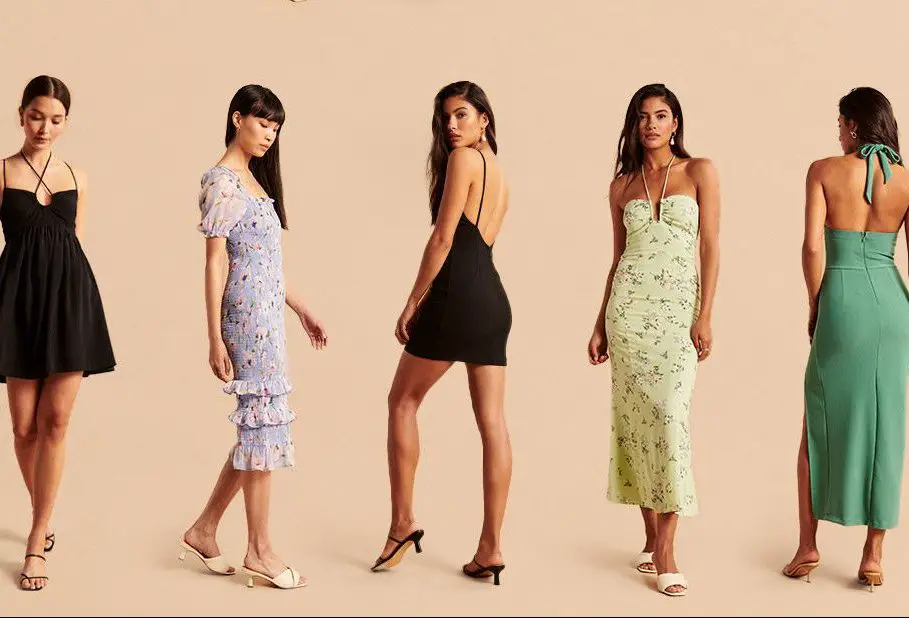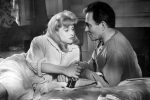The 2020s, just like the preceding decades, has witnessed a rise in nostalgic media and conversation about the things that defined society 20 years prior. During the 2010s, many people were obsessed with “Friends,” grunge music and the stylistic elements of the ’90s like butterfly clips and chokers. The same can be said for the ‘80s-influenced 2000s, a prime example being Bowling for Soup’s hit cover of the song “1985.”
Now, people’s mindsets have shifted their focus to the aughts, ranging from its entertainment to fashion trends. Many companies and celebrities, such as Gen Z singer Olivia Rodrigo, continue to pull from and be inspired by these elements — with successful results. However, with the revived discussion of any historical period, artifacts of the past will get viewed through a more critical lens. Nothing is immune from this type of reaction, including the latest point of interest, the classic brand Abercrombie & Fitch.
Company Origin and Initial Rise to Popularity
The origins of the company trace back to 1892 when David T. Abercrombie founded Abercrombie Co. in New York City. However, it wasn’t until 1904 when Ezra Fitch joined the organization that the brand’s name changed to what it is now — Abercrombie & Fitch. At first, the business stocked items related to outdoor activities such as camping and fishing. In 1909, however, its catalog expanded to include other types of products, and more stores opened across America in the ‘50s and ‘60s. While the company has existed for almost 130 years, it did not find mainstream success until the late ‘90s and early 2000s following various organizations purchasing and selling the company and even a run-in with bankruptcy.
In the 1990s, Mike Jeffries took over and became CEO of Abercrombie & Fitch. With Jeffries at the forefront, the company shifted toward a teenage demographic. With the rebrand, hypersexualized marketing campaigns and more affordable prices compared to other stores, the organization became the hottest place for adolescents to shop and work. At the start of the millennium, it was practically impossible to go anywhere without seeing the words “Abercrombie” and “Fitch” or the associated moose logo. Abercrombie & Fitch continued to be immensely popular worldwide until its eventual decline in the 2010s when people started favoring outside brands such as Forever 21 and H&M. The company is still around, but it does not bring in nearly as much money or receive as much engagement as it once did.
Controversies
Some might believe that Abercrombie & Fitch is coming under fire for the first time due to the recent release of the Netflix documentary “White Hot: The Rise and Fall of Abercrombie.” But issues with the brand go as far back as 2003 when a group of employees sued the company for discrimination. The lawsuit was settled out of court in 2004. The business was ordered to pay $40 million. While Abercrombie & Fitch promised to make changes to their labor practices, that did stop them from being sued once again by Muslim American Samantha Elauf. She claimed that she was not allowed to work at one of their stores in 2008 because of her headscarf. The case made its way to the Supreme Court, and she won in 2015 with 8 out of 9 justices ruling in her favor.
These court cases linked to a larger problem with Abercrombie & Fitch in the 2000s: racism. The once beloved brand has been exposed for racist hiring practices. Anthony Ocampo, a subject interviewed for the documentary, worked there over the winter season and was promised a position in the summer, but when he decided to start work again, he was denied a job. When he asked a brand representative for an explanation, she replied, “Well, my manager says we can’t rehire you because we already have too many Filipinos working at this store.” This is definitely not an isolated case. Many past employees and hopefuls of color have come forward with their own stories of prejudice.
Also, the apparent racial discrimination translated into the brand’s product line, which included offensive T-shirts riddled with harmful depictions of Asians accompanied by stereotypical Asian fonts. The most notorious piece was a shirt advertising a fictional company called Wong Brothers Laundry Service and the phrase “Two Wongs Can Make It White.”
Another issue brought up in the documentary and in many articles about the company is the predatory behavior of certain people and decisions enforced by the organization. Bruce Weber, a former Abercrombie & Fitch photographer, has been accused by numerous models, some of them minors when they interacted with Weber, of sexual misconduct. Weber responded to these accusations in a New York Times article with the assertion that he has “never touched anyone inappropriately.”
Moreover, Abercrombie & Fitch’s sexualized and exclusionary image has contributed to and promoted the body shaming and fatphobia that already ran rampant in the 2000s. For one, Abercrombie & Fitch was no stranger to sexualized advertising, especially with its teenage-centered campaigns. Additionally, at the front of their stores once stood shirtless men or “models” who customers, mainly teenage girls, could take pictures with. Those hired, along with almost all of the staff, were white, thin and conventionally attractive. The company held its staff to exacting standards and would cut those that did not conform or maintain a specific image.
Moreover, their stores contained only a limited number of sizes. The company’s emphasis on appearance and its weight-based discrimination provoked backlash to the point that eating disorder survivor Benjamin O’Keefe began a Change.org petition signed by close to 80,000 people that called for Abercrombie & Fitch to “embrace the beauty in all sizes by offering XL and XXL sizes for women and men!”
These are only some of the issues connected to the company. The business has also caused outrage in the past for misogynistic and homophobic actions. Abercrombie & Fitch’s past is one that is dark and riddled with unacceptable behavior.
Mike Jeffries, the Man Behind These Controversies
Jeffries, while the person whose vision allowed Abercrombie & Fitch to become the cultural juggernaut it once was, is the figure responsible for nearly all of the brand’s problematic actions. All of these issues stem from him. By creating an image that associated the company with being “cool,” the organization made choices that purposefully excluded those who did not fit their ideal shopper — white, thin, middle class, young and conventionally attractive.
Jeffries has never shied away from or tried to hide his disdain for people who did not fit into his narrow category of beauty. In an infamous profile with Salon, the former CEO said, “Candidly, we go after the cool kids. We go after the attractive all-American kid with a great attitude and a lot of friends. A lot of people don’t belong [in our clothes], and they can’t belong. Are we exclusionary? Absolutely.” After this statement, he continued, “Those companies that are in trouble are trying to target everybody: young, old, fat, skinny. But then you become totally vanilla. You don’t alienate anybody, but you don’t excite anybody, either.” Even with the negative reaction this article got, Jeffries and the company upheld their bigoted views and practices until he was ousted from the position in 2014. That profile was published in 2006. Jeffries has not apologized or shown remorse since.
Modern Brands and Where We Go From Here
Following the release of the documentary, the current CEO Fran Horowitz published a statement on Instagram along with a lengthy caption. The post read, “We’re focused on inclusivity – and continuing that transformation is our enduring promise to you, our community. Always Forward.” The statement has received mixed reviews with a large portion of users noting the lateness of the apology. Abercrombie & Fitch has made changes after Jeffries’ exit, but none of them have been particularly revolutionary or noteworthy. That does not mean that the moves the business has made to get away from its past should be ignored. The models are gone, their sizes are more inclusive, and teens and selling sex are not their focus anymore. These are good and necessary improvements.
With the hateful, shallow history of Abercrombie & Fitch comes an important call for more inclusive companies. Some companies are transitioning in that direction or are being founded upon better principles. Two current businesses include Fenty Beauty and Savage X Fenty, brands founded by singer Rihanna that prioritize inclusivity and positivity over exclusivity. Catering to a broader market has permitted a diverse consumer base and more respect from the media and public. Society does not need another Abercrombie & Fitch or a repeat of its countless damaging mistakes.















